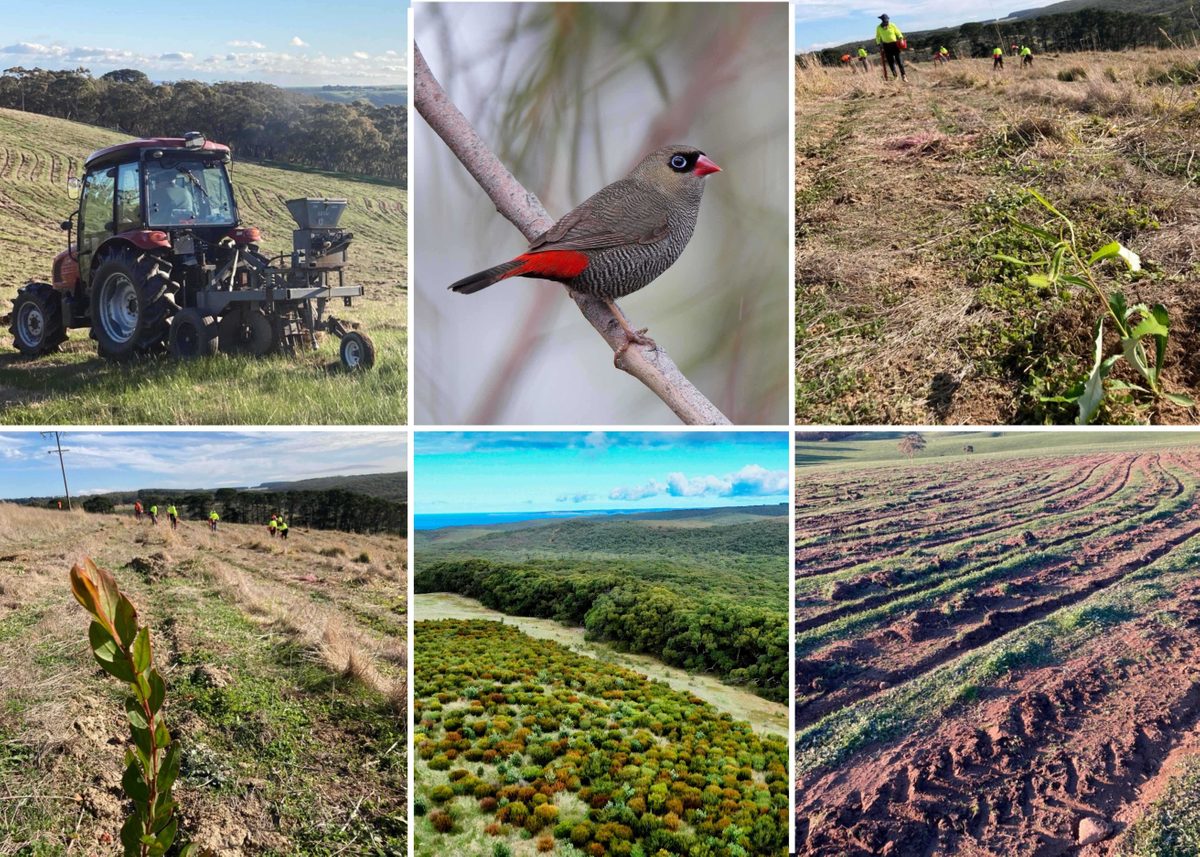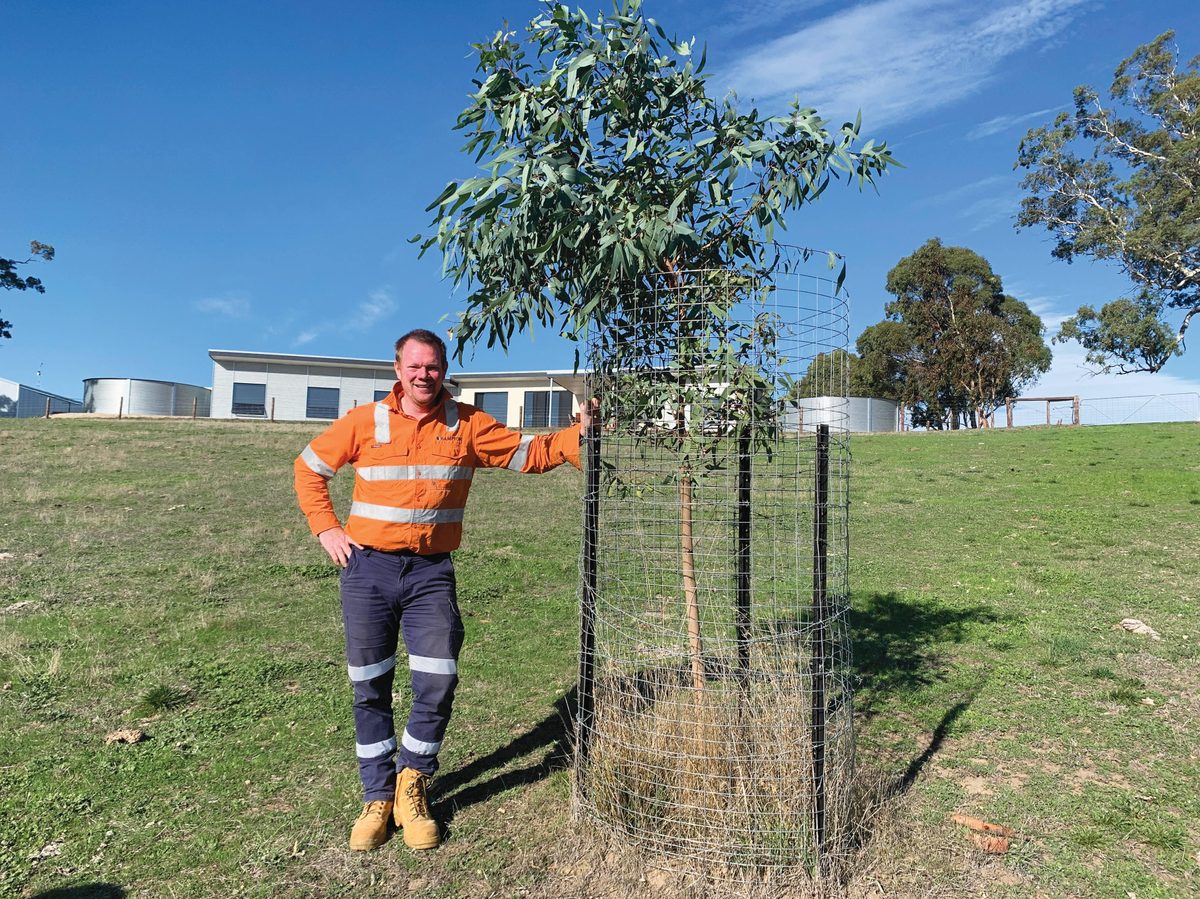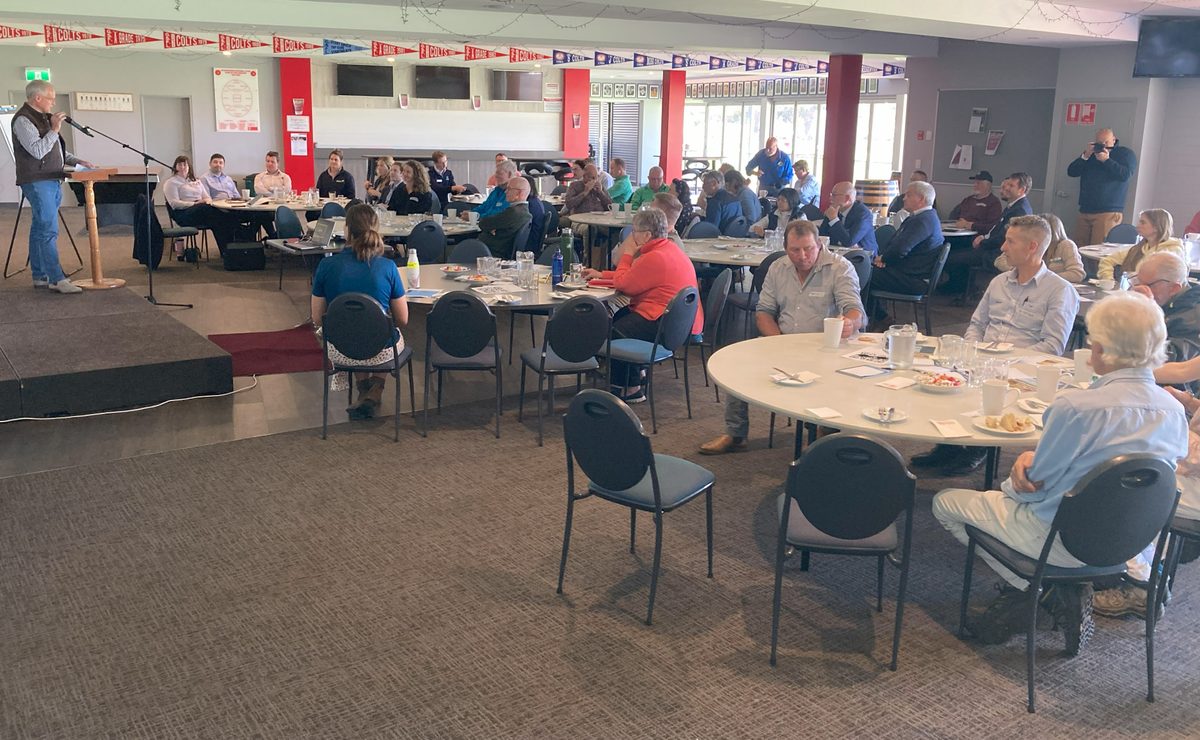Recreating heathland habitat for threatened birds
At Deep Creek National Park and nearby private land, we’re transforming 80 hectares of former sheep paddocks into native closed shrubland vegetation to provide critical habitat for threatened heathland birds.
The new habitat will add to the almost 200 hectares of heath and swamp vegetation we have established since 2016.
One of the key species we’re targeting is the nationally Endangered (EPBC Act) western beautiful firetail, a rare and striking bird that relies on large areas of heath habitat for food and shelter. It isn’t alone in needing this habitat, the nationally endangered Mount Lofty Ranges (MLR) southern emu-wren is among a suite of other bird species that will also benefit from the recreated habitat.
This large-scale revegetation project is being delivered by Landscapes Hills and Fleurieu in partnership with the Department for Environment and Water (DEW). It is also helping achieve the objectives of the ReBird the Ranges collaboration, which is aiming to create and restore bird habitat across the Mount Lofty Ranges.
Specialised steps to habitat restoration
The recreated habitat needs to have the right structure and food resources for the threatened birds. A major point of difference of this revegetation compared to the usual revegetation types, is a higher plant density and lack of overstorey species, particularly eucalypts.
The project utilises a two-step approach to revegetation, which helps keep costs relatively low while achieving the desired outcome in a short timeframe.
First, after controlling weeds, we direct seed in rows with a selection of 8 to 10 native plant species that will readily germinate (e.g. Allocasuarina striata, Melaleuca decussata and Xanthorrhoea semiplana).
Then, one year later we return to control weeds between the direct seeded rows before infill planting tubestock seedlings of additional species. The infill planting helps obtain species diversity and achieve the dense vegetation structure.
The result is a habitat that provides large amounts of food resources and low, dense structure, which is particularly important for bird species that avoid areas with tall trees like the MLR southern emu-wren.
From seeding to strong growth
Last year, with state government funding, we direct seeded 40 hectares with an initial mix of eight native plant species in rows extending over 230 kilometres. Germination was highly successful (almost 10,000 seedlings per hectare), and most survived a very dry summer - an encouraging result for such challenging conditions. We continued to employ contractors to regularly undertake weed control to reduce competition from grasses and broadleaf weeds, helping the young plants grow vigorously.
Expanding habitat this year
In winter this year, over 128,000 tubestock seedlings of 18 native species were planted between the direct seeded rows from last year.
This funding is allocated on behalf of the Minister for Climate, Environment and Water to deliver the Mt Lofty Ranges Declining Woodland Bird Project: Heathland Restoration in Deep Creek.
At the same time, through our Back from the Brink project, supported by the Australian’ Government’s Natural Heritage Trust, we direct seeded an additional 190 kilometres to commence the next stage of revegetation. Next winter, this site will be infilled with more than 80,000 tubestock seedlings from over 20 species, and preparation will commence for future revegetation stages in 2027 and 2028.
A safer future for threatened birds
By combining machine direct seeding with infill tubestock planting, we’re able to establish large areas of habitat quickly, at a relatively low cost and help secure a long-term future for numerous native species.
Western beautiful firetails are already using large areas of our previously revegetated closed shrubland, at multiple sites, within five years of their establishment. The revegetation is also providing important habitat for a variety of other animals as well, including reptiles, mammals and insects.
Learn more about the Back from the Brink project here.
The Back from the Brink project is funded by the Australian Government Natural Heritage Trust, and delivered by the Hills and Fleurieu Landscape Board, a member of the Commonwealth Regional Delivery Partners panel.

Direct seeding and tubestock planting at Deep Creek National Park and nearby private land aims to increase the area of available closed shrubland habitat for threatened bird species, including the western beautiful firetail.



